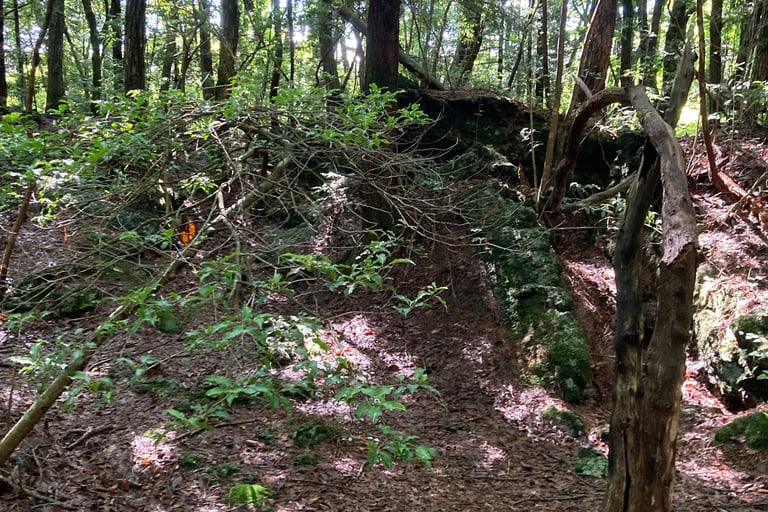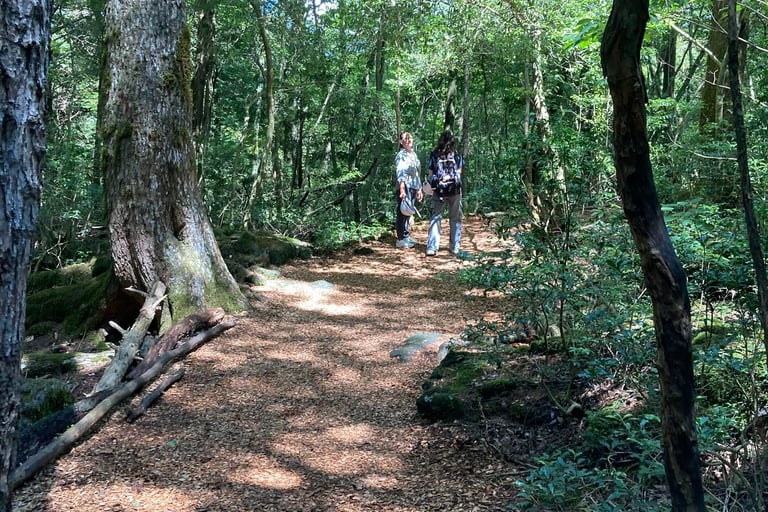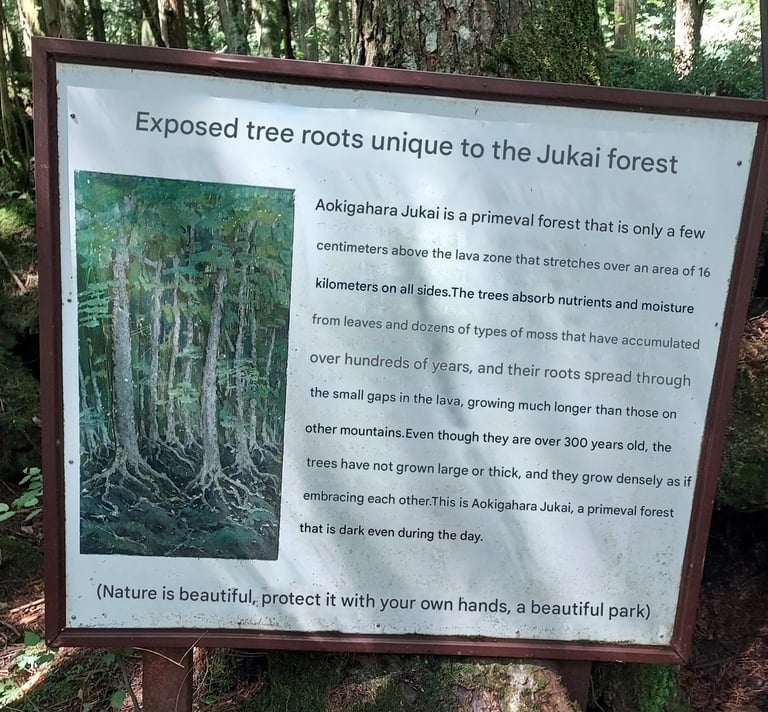What's Stopping You? Change Your Life!
Lost and Found in a Sea of Trees
Aokigahara Jukai
JAPAN
9/25/20253 min read


Recently, in an attempt to escape the summer heat of Tokyo my family and I decided to head out of the city into the open, greener and cooler region of Yamanashi prefecture. Cooler as in temperature. Tokyo is very "cool" (there's my disclaimer).
We found a rental home in the outskirts of Kawaguchiko ( Lake at the River's Mouth). It was a beautiful home and the landscaping was a field of cabbage. It was a practical use of space in a traditional Japanese way and aesthetically pleasing.
There are many things to see in this area. There is the Narusawa Ice Cave ( echoing marsh which refers to the soundscape of the area). Which, was very claustrophobic, but, once inside was quite calming in it's cramped quarters.
There is also the Fugaku Wind Cave (abundance mountain which is actually a reference to Mt. Fuji). I will discuss both of these in my next blog.
Then there is the restored village of Nenba (place of origin). It is now called Saiko Iyashi no Sato Nenba (The Healing Village of Nenba by West Lake). There, a reconstructed village reflects how life was in this valley until a 1966 landslide destroyed Nenba. There are 20 thatched roof structures carefully maintained to reflect traditional building styles and to serve as a memorial to the people affected by the landslide.
I will follow this with a blog concerning Nenba.
These are beautiful spots to see in or near Aokigahara Jukai. All within a 30 minute bus ride.
The elephant in the room is Aokigahara Jukai. It is an incredibly beautiful somewhat eerie place where silence becomes deafening.
Aokigahara hugs the northwest base of Mount Fuji. Aokigahara Jukai, the Sea of Trees (Jukai). The floor of the forest is hardened lava from Fuji’s 864 CE eruption, leaving rocky, uneven ground carpeted with moss. The trees are so dense that wind is muffled and sunlight barely touches the forest floor, creating an atmosphere that is both peaceful and unnervingly still. There is, within the park, a small patch of the forest that shows how the land looked prior to the eruption in 864CE. but, it is a very small portion.
Japanese folklore says Aokigahara is home to yūrei — restless spirits of those who died with anger, sadness, or unfinished business. They are described wearing white funeral robes (shiroshōzoku), with long black hair — the same ghostly image seen in kabuki plays and horror films. Some stories warn that these spirits lure travelers deeper into the forest until they lose their way.
I didn't see any. I did see a beautiful green carpet of forest which somehow seems to be largely ignored by those seeking the eerie attributes.
Today, Aokigahara is sadly known as a place where some go to end their lives. There are signs in the park that attest to this. There are suicide prevention placards with phone numbers and the there is the colored tape. Don't follow the tape. Authorities and volunteers patrol the trails and post signs with helpline numbers, encouraging visitors to reconsider.
But Aokigahara is not only a place of sorrow. It’s easy to get lost here, and that’s part of the magic. The forest swallows you in a hurry and leaves you within stillness and beauty. There is so much to see here, I recommend you go for the beauty and calming breeze. Don't let its reputation keep you away from such a stunning site.
When you finally step back into the sunlight at the edge of the trees, you may feel lighter — as though the Sea of Trees let you wander not just where you wanted, but where you need to be.






